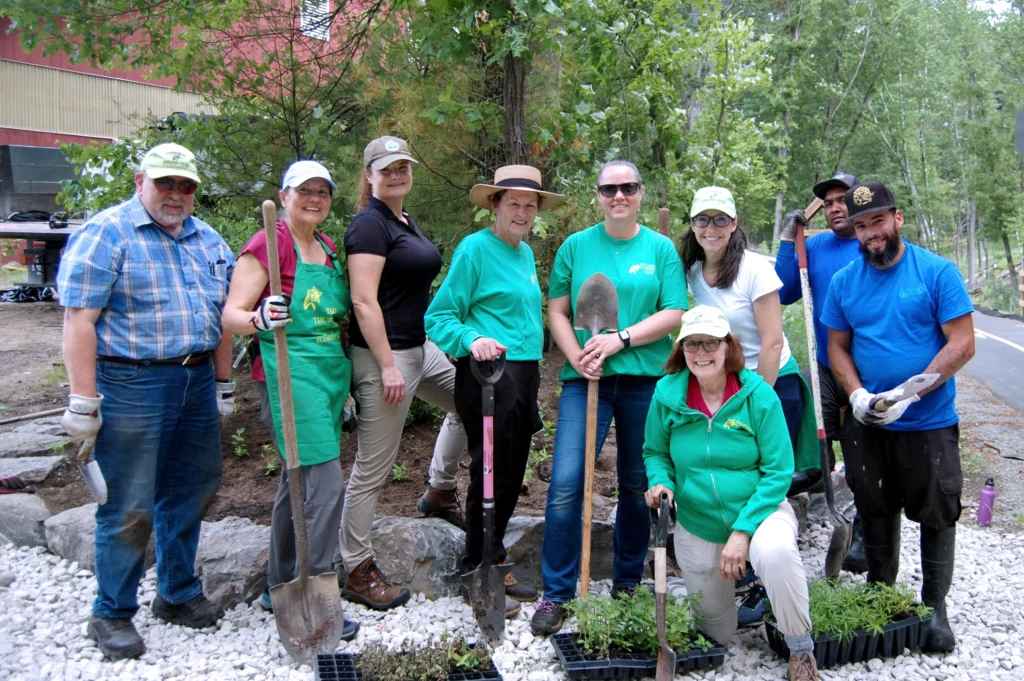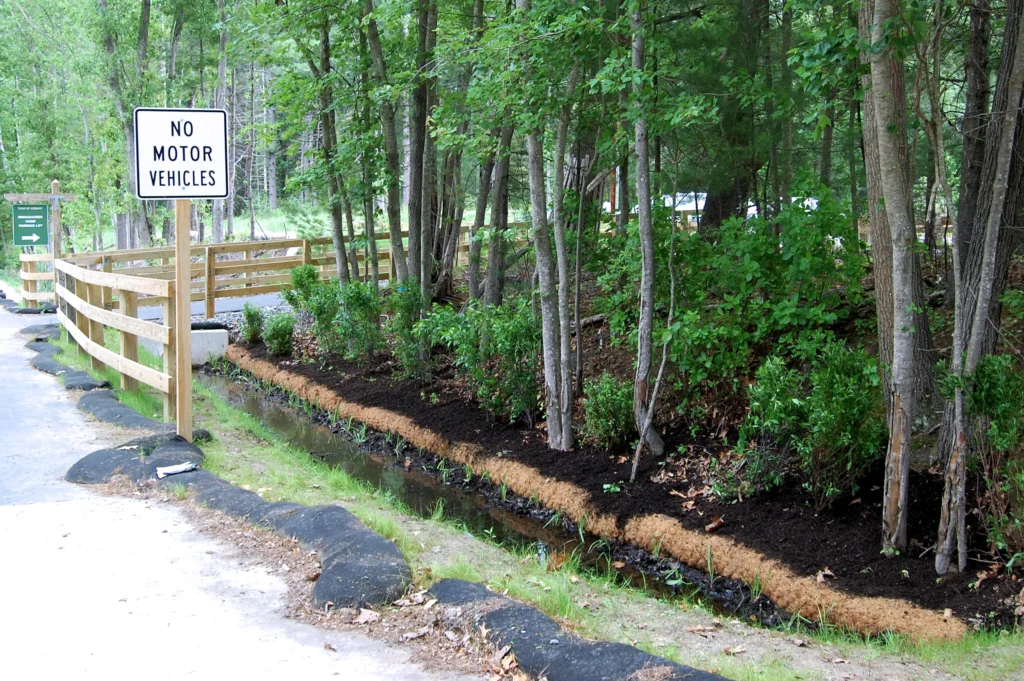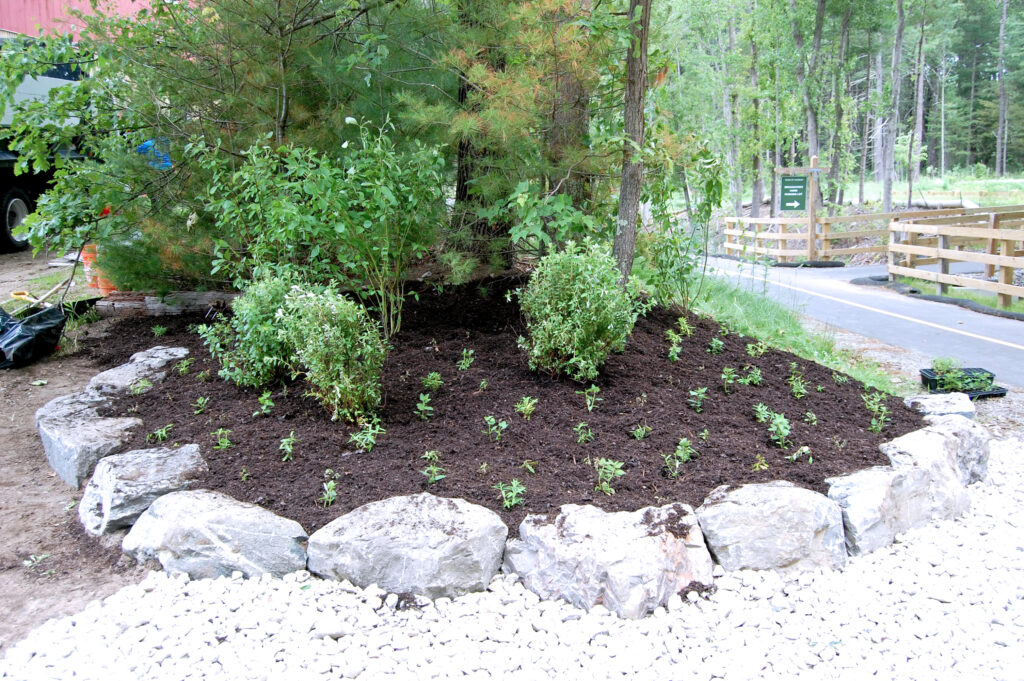A New Rain Garden Blooms in Sudbury
June 20, 2025
OARS River Log | By Sarah Kwan, OARS’ Director of Communications and Development | Published June 20, 2025
On June 6, 2025, a new rain garden and pollinator garden took root along the Bruce Freeman Rail Trail in Sudbury at its intersection with Morse Road next to the Broadacres Farm Parking Lot—bringing together community members, native plants, and a shared vision for cleaner water and healthier habitats.

Designed by A Yard and a Half and planted by dedicated members of the Thursday Garden Club of Sudbury, the garden transforms a once-plain trail intersection into a living example of how nature-based solutions can help protect the rivers we love. With support from the Sudbury Conservation Commission and generous funding from The Sudbury Foundation, the garden was made possible through strong local partnerships and the belief that small actions add up.

Why a rain garden?
Rain gardens capture and filter stormwater runoff before it reaches nearby rivers and streams. This garden improves local water quality, supports native pollinators, and recharges groundwater—all while brightening the rail trail with color and life.

Native plants at work
The garden features resilient plants like swamp milkweed, blue flag iris, joe-pye weed, and winterberry, chosen for their ability to thrive in wet and dry conditions without fertilizers. Across the trail, the pollinator garden blooms with anise hyssop, New England asters, and butterfly milkweed, creating a haven for bees, birds, and butterflies.

OARS will install educational signs at the site later this summer, with a ribbon-cutting ceremony to follow. For now, keep an eye out for bright blooms—and the pollinators they support—next time you’re out on the trail.

